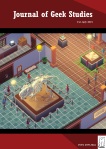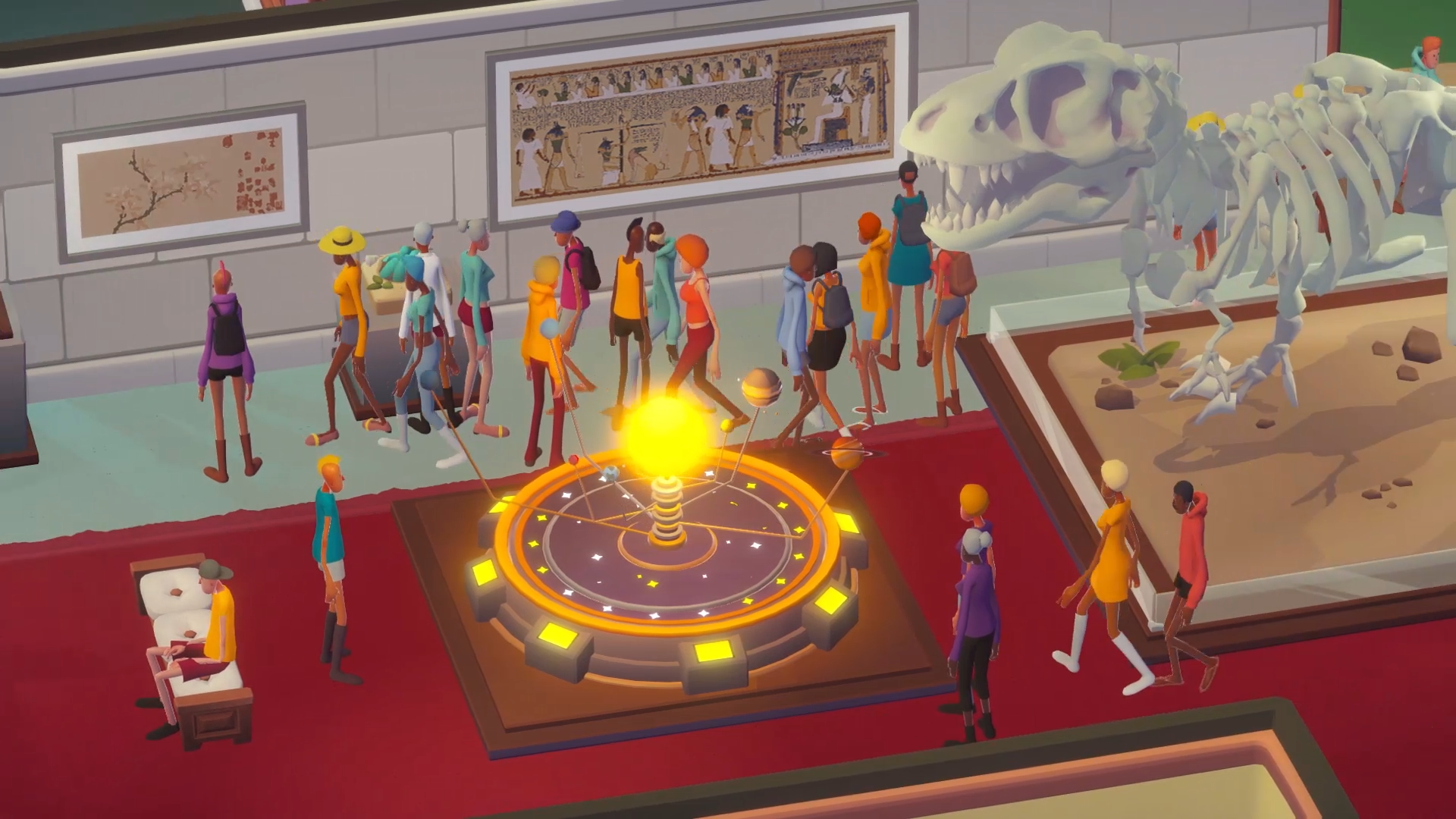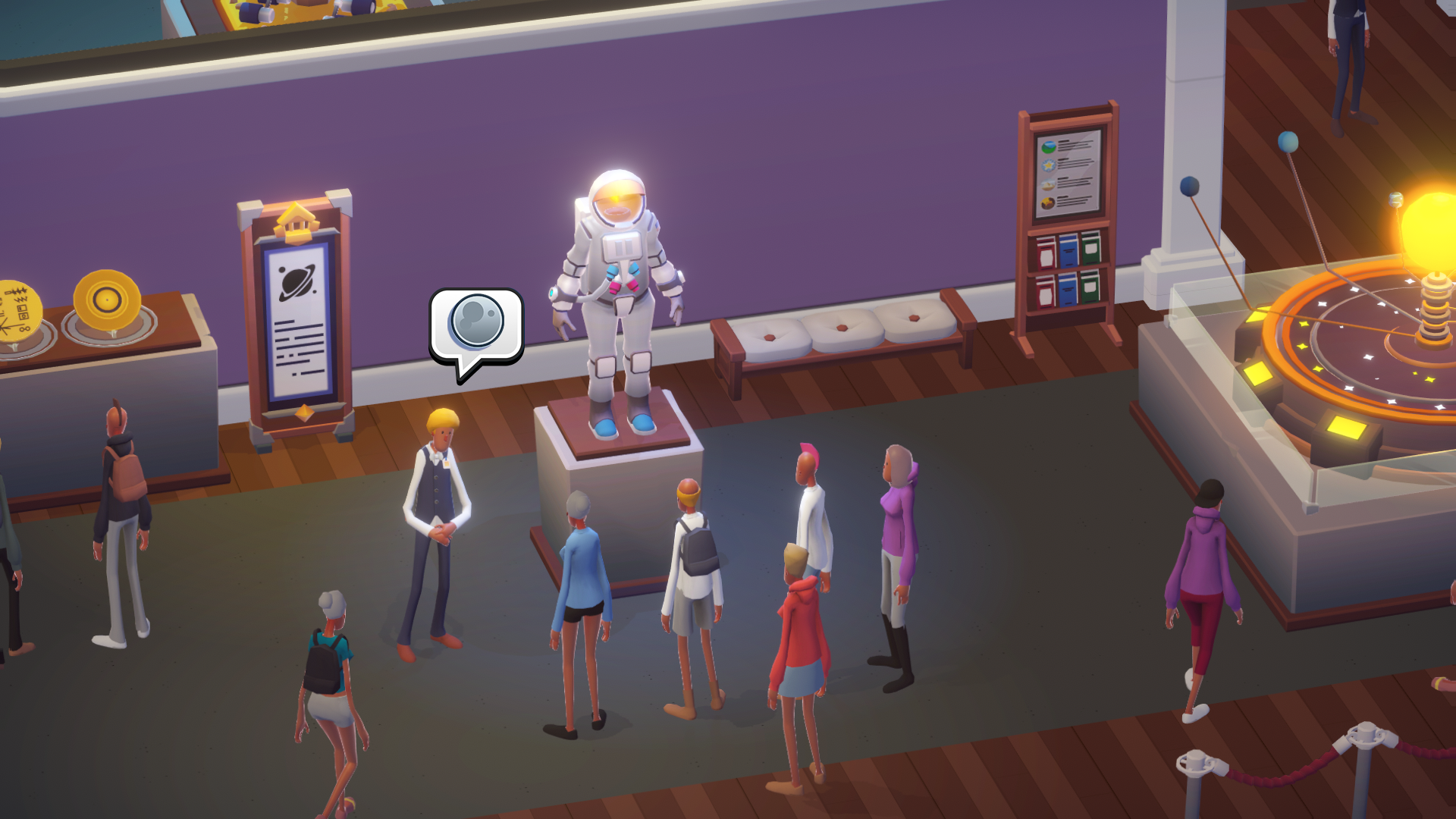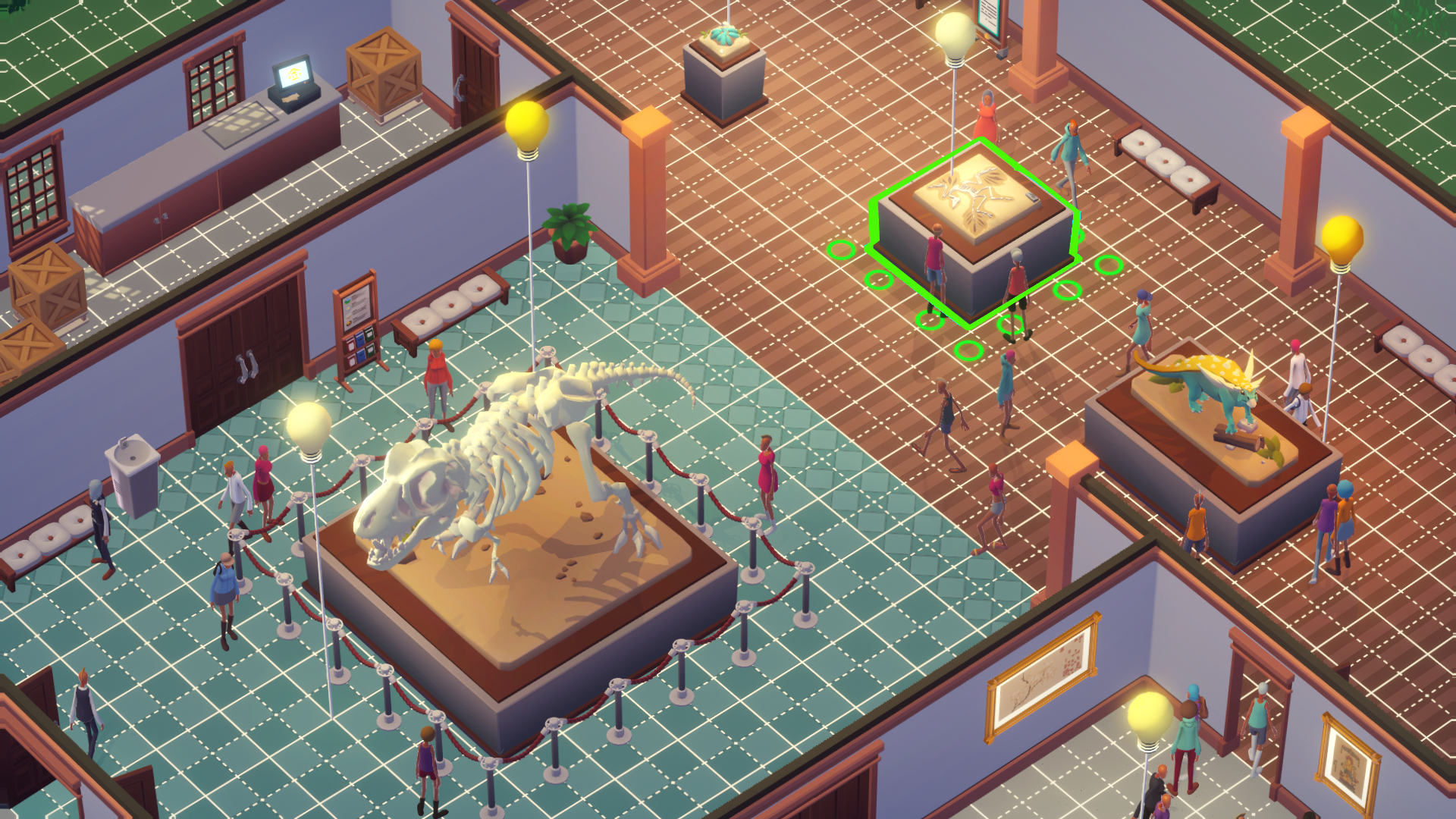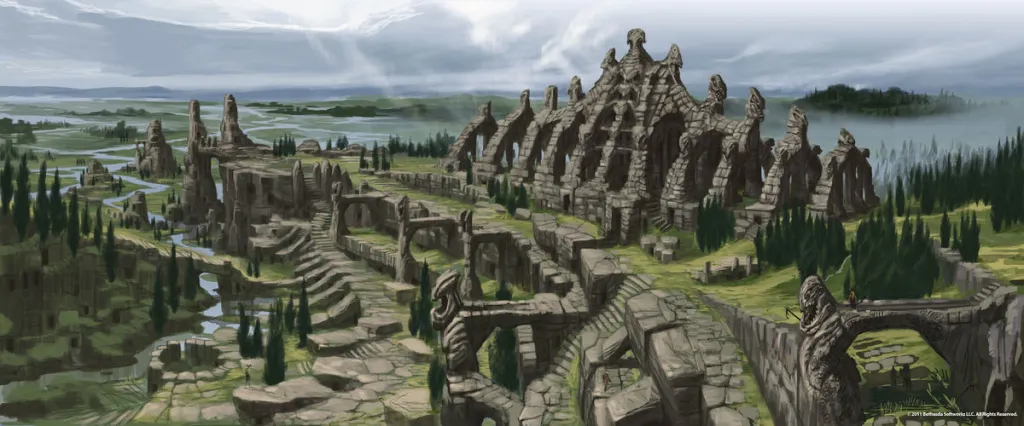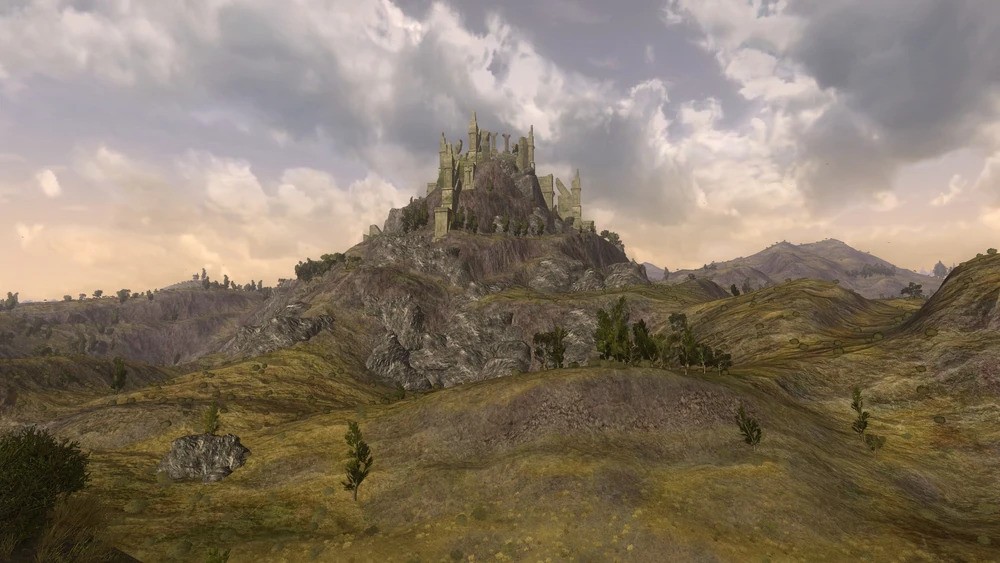Interview with Michel McBride-Charpentier
https://doi.org/10.5281/zenodo.8352084
Mondo Museum is an upcoming simulation game developed by Viewport Games[1] where you can build your dream museum. Equipped with dinosaurs, Books of the Dead, classical paintings, and space-age stuff, Mondo Museum has something for everyone. The game will be soon published by Kitfox Games and is already listed on Steam.
The Journal of Geek Studies interviewed designer/programmer Michel McBride-Charpentier to understand how such a wonderful game like Mondo Museum came to be. You can read the full interview below.
Interview
Q: There are lots of sim games around, but as far as we know, there has never been one about curating and running a museum. So how did you get that idea?
A: After the announcement, a few people have said they’d also had the idea of a “SimMuseum”, so I don’t think it’s a wholly original concept. I’m actually really surprised nobody else has made a game like this since the idea first popped into my head over a decade ago and I’ve spent the last 5 years really expecting one to drop on Steam at any moment.
The idea, like most good ones, came to me through synthesizing a lot of different interests I’ve developed over my life: visiting a wide variety of museums in school and later as an adult, a love for Maxis and Bullfrog management games, and a personal desire to create work that is educational and engages players with systems thinking without being a dry capital-letters Serious Game.
Q: Do you have any particular type of museum you enjoy the most? Or an all-time favourite museum?
A: Museums that contain a wide variety of exhibits that have no apparent relation to each other are always the most fun for me to visit. For example, The Met in NYC which has collections ranging from Ancient Egypt to medieval European armour to Rembrandt paintings. The Royal Ontario Museum in Toronto is also in this vein, with dinosaur skeletons and fossils next to Chinese sculpture.
Asking for my favourite is an impossible question, but I’ll use this opportunity to shout out the Noguchi Museum in Queens, NYC. It’s entirely focused on the life and work of Japanese-American sculptor/designer/landscape architect Isamu Noguchi. Walking through those galleries and the sculpture garden for the first time sparked a real appreciation for abstract sculpture I never had before, and he instantly became my favourite artist of the 20th century.
Q: Did you bring into Mondo Museum some of your personal experience or preferences?
A: Choosing which collections to include at launch was definitely driven by my personal preferences. When I was a kid I wanted to be an Egyptologist and archaeologist, so including an Ancient Egypt collection was an obvious choice. Many of the things that invoke a sense of wonder in kids but are often lost as we become older are represented, such as dinosaurs, space exploration, and the geology of the Earth.
Q: Have you or anyone in the team worked in a museum before?
A: C.J. Kershner is writing the exhibit item descriptions and the few characters who are directors/curators of other museums, and has many years of experience volunteering at the American Museum of Natural History as an info desk attendant (so obviously had to know a lot about the workings of the museum from the visitor’s perspective), and as an explainer for a live exhibits team.
Q: So, let’s turn to the game now. What is the players’ goal in Mondo Museum? Are there different scenarios and objectives to be met?
A: There’s a sandbox mode where the end goal, or how to achieve the highest prestige ranking, is mostly up to the player to define. There is a task/objective system that provides short-to-medium term goals, such as unlocking new items or receiving more funding.
As for scenarios, the current plan is to have those, though what exactly they will look like is still undecided. A campaign where you move between different museums with unique challenges and constraints is the goal, but will likely only come in an Early Access update.
Q: From what we’ve seen, the game includes all types of museums: natural history, technology, archaeology, anthropology, art, etc. How did you manage to gather all these different areas of study and interest into a single package?
A: As I mentioned above in what my favourite types of museums to visit are, it’s not uncommon for real museums to display a wide variety of collections under one roof. But we go one step further, and let players mix and match items from any collection. The challenge was in selecting items that complement one another and allow players to discover these relationships between items. One example is how in the Ancient Egypt collection there’s an astronomical chart, and tools for observing the stars, that can be combined with items from the Space Exploration collection to create a kind of “Astronomy through the Ages” combo. Right now I’m explicitly defining these combos, but might try out a more free-form tagging system, where for example any item tagged “Tool” could be placed in an exhibit hall with others that share that tag.
Q: And now perhaps the most important question of all: does Mondo Museum include exhibits of the giant squid (Architeuthis dux) or the colossal squid (Mesonychoteuthis hamiltoni)?
A: “The Ocean” is on a shortlist for collections to include in a future content update, but if you’re really desperate to see some horrors of the deep, mod support means if a player can make a 3D model of one then it will be very easy to put in the game.
Q: Did you bring in any museum staff as consultants while making the game?
A: No real consultants other than C.J., but if anyone is brought in will likely be to review specific collections for cultural sensitivity issues we might have been oblivious to. For example, someone recently brought up the debates museums have around the subject of human remains when making exhibits about ancient burial practices and so on, which I hadn’t considered before. That kind of insight is really helpful (in our case, this helped me decide to only have mummified animals because a) they’re actually pretty cute while human mummies are pretty gross and b) a human mummy is kind of unnecessary since the real interesting artefact/art is the coffin and sarcophagus).
Q: There is a lot of discussion today around ownership and repatriation of artefacts, especially in archaeology and anthropology[2]. It is a tough subject, but does Mondo Museum tackle it in some sense?
A: Absolutely, and it’s core to the politics of the game. I didn’t want to recreate the systems of colonialism and looting that resulted in many museums in the West originally acquiring their collections. Mondo Museum takes place in a more just and utopian world, where all items have been repatriated (or never left in the first place). The way you unlock new exhibit items is by satisfying the conditions of visiting directors/curators from these museums around the world, who will then effectively give you permission to display parts of their collections.
Q: The game focuses on the exhibitions, which are the public face of museums. Will there be any mention to the vast collections of objects and specimens museums have and of all the research (scientific and otherwise) that is done based on these collections?
A: The research and archive aspect of the game is still a work in progress (there are researcher staff you hire who can improve the quality of your items/the understanding visitors get from it in a sort of abstract way), but I like the idea of the item we have created that is on display representing a lot of associated items that don’t have 3D models but you need to manage to some extent. I’m trying to keep the scope achievable for the moment, but big updates are planned throughout Early Access.
Q: Do you hope the players will learn something with Mondo Museum or maybe spark their interest to visit a museum?
A: I really do hope it encourages players to go to museums if they haven’t been in a while, or maybe since a school field trip. Hopefully the game will give everyone a deeper appreciation of the work behind creating an exhibit that makes sense to the public, or consider what curation decisions they might have done differently to tell a different story.
Q: Do you hope museums worldwide might learn something from Mondo Museum?
A: The people running modern museums are generally doing a really good job in engaging visitors these days, so I’m not expecting to reveal anything they don’t already know. Maybe there could be more museum activities for adults, and not just kids or currently enrolled students. I’m targeting an audience of all ages, and there’s been a lot of interest from adults intrigued by the game. Curator talks, seminars, group tours, opening parties, etc., are fairly common, but I’d love to see more creative activities and workshops designed with adults in mind, since there’s clearly an adult audience for “playing” with museums.
ABOUT THE TEAM
Michel McBride-Charpentier is Mondo Museum’s designer and programmer; the other team members are Genevieve Bachand (artist), Farah Khalaf (producer), C.J. Kershner (writer), and Rhys Becker (artist). Viewport Games is a small studio based on Montréal, Canada. Kitfox Games, also from Montréal, is an independent games studio focused on creating intriguing worlds to explore.
[1] Be sure to visit their website [https://mondomuseum.com/].
[2] See, for instance: Woldeyes, Y.G. 2019. Repatriation: why Western museums should return African artefacts. The Conversation, 15/May/2019. Available from: https://theconversation.com/repatriation-why-western-museums-should-return-african-artefacts-117061
